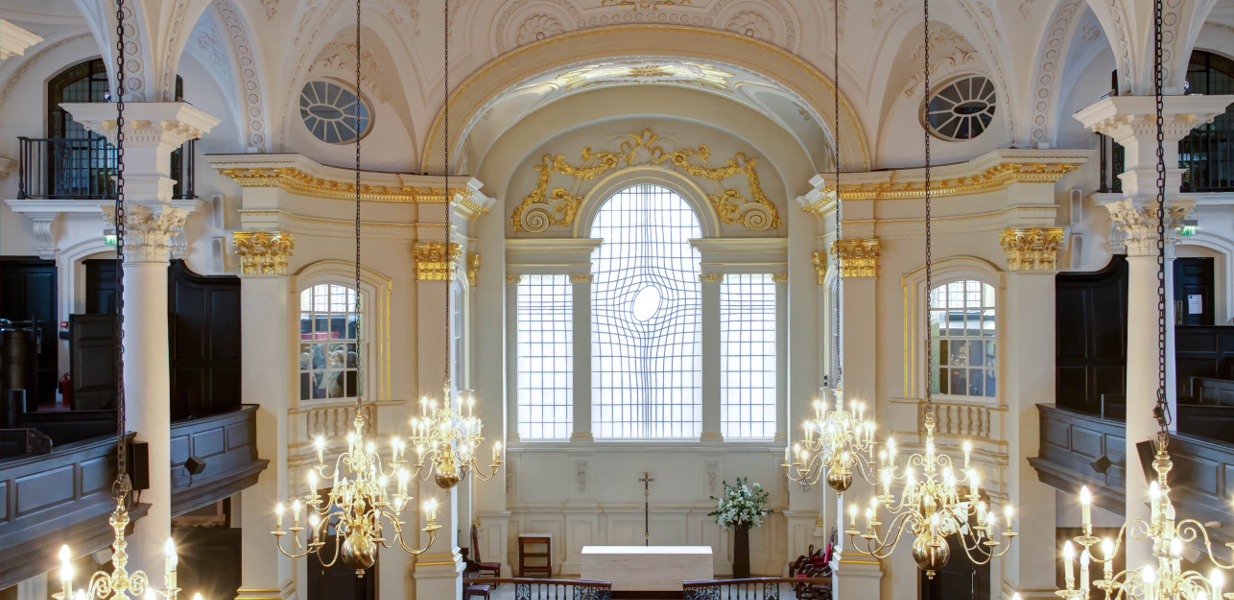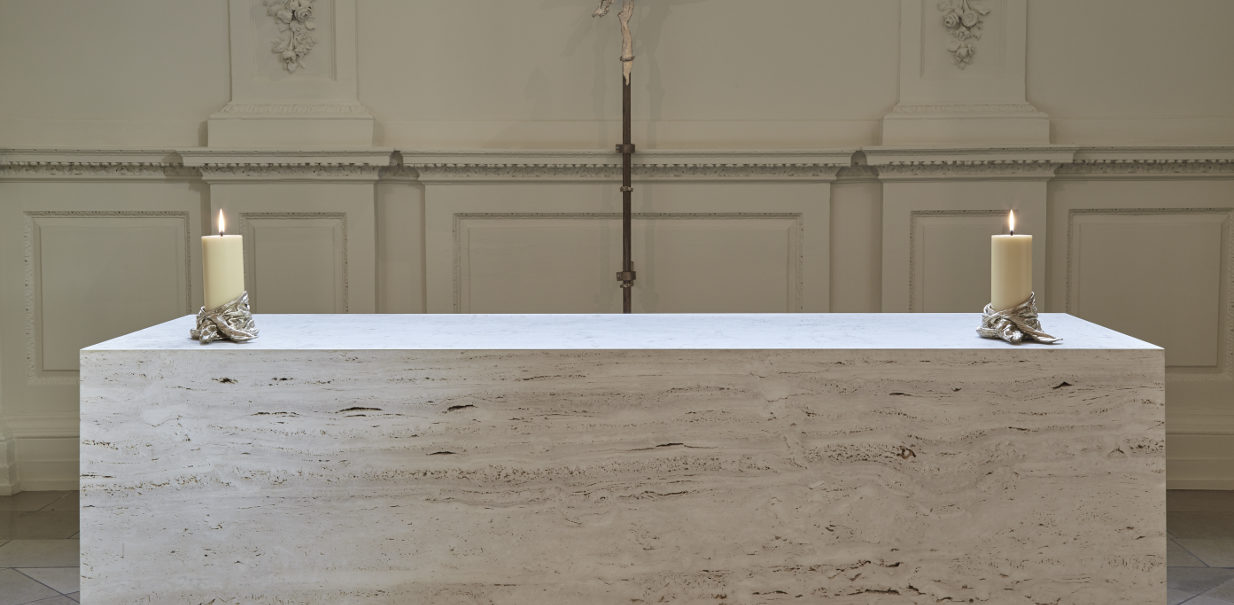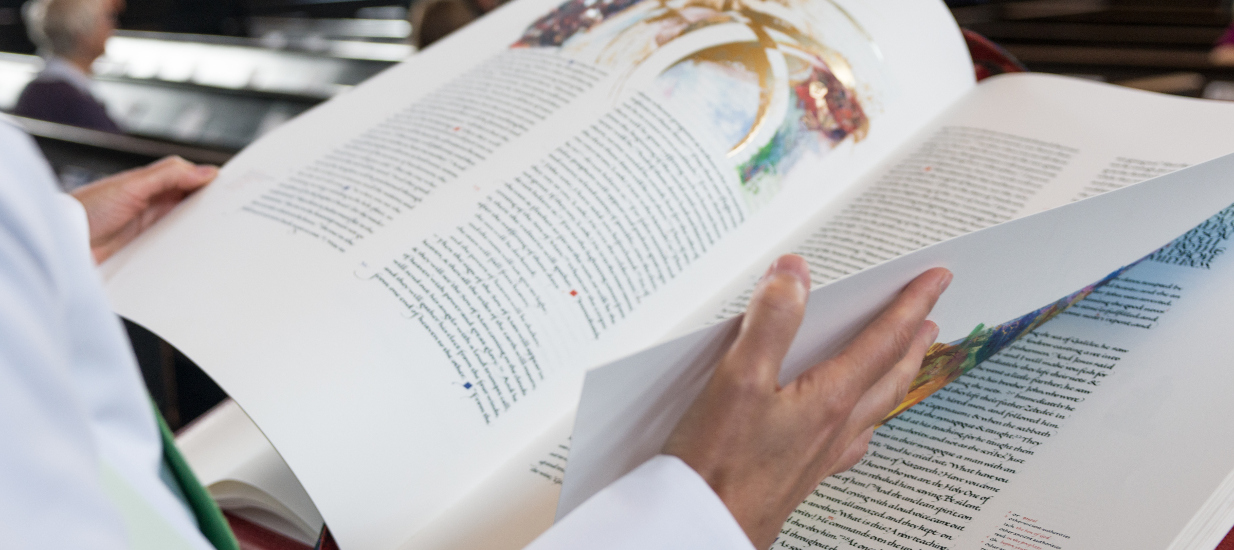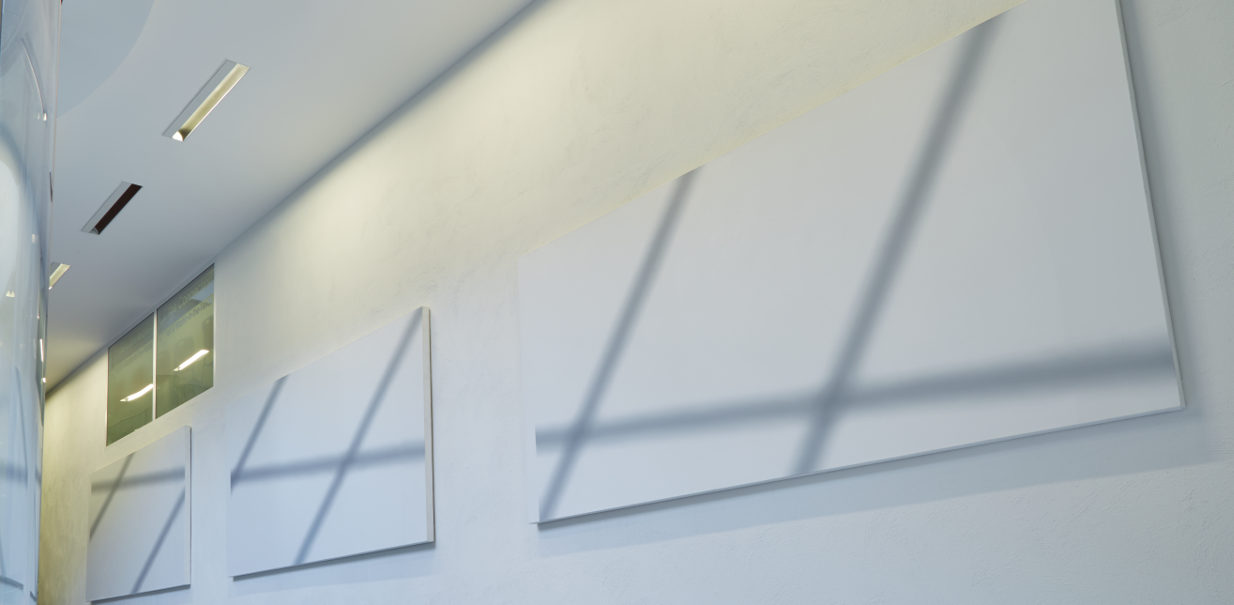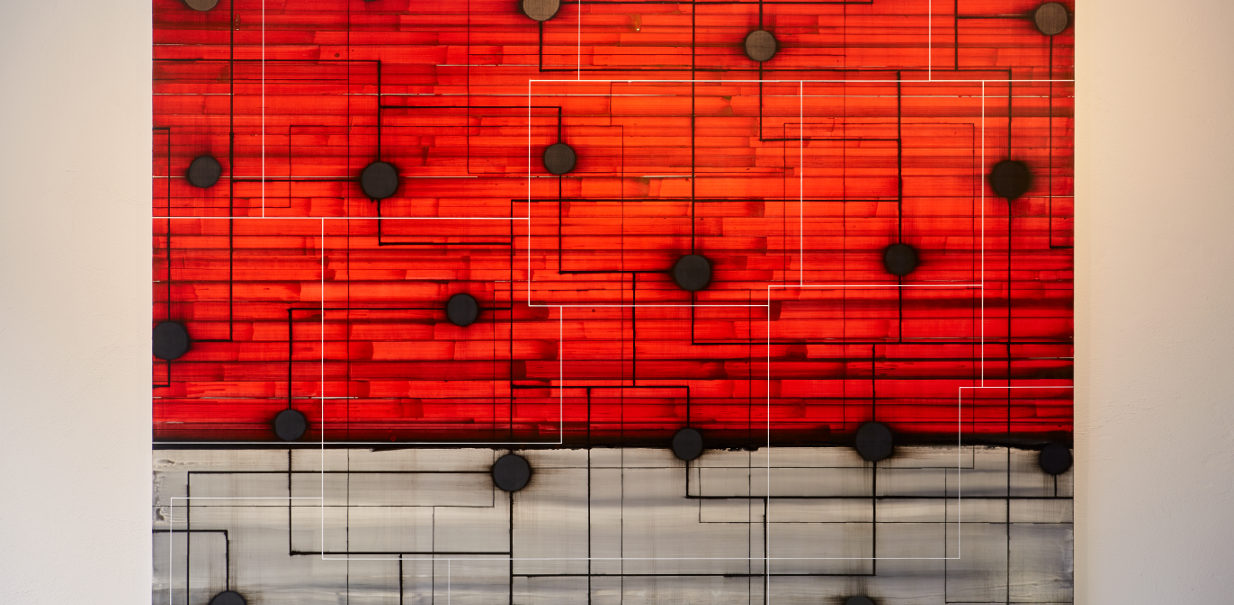Upcoming Exhibitions
Any upcoming exhibitions can be found below.
Permanent Installations
St Martin-in-the-Fields has a collection of historic memorials and art installations by contemporary artists.
Processional Cross, 2013, by Brian Catling
Catling’s exquisite design references a ‘cross of poverty’: not an ornate object, but one crafted from basic materials by someone with the simple desire to fashion the powerful symbol of the Cross. The starting point is two pieces of wood humbly tied together by a length of string; a third piece of wood hanging from the centre provides an allusion to St Martin tearing his cloak in two and giving half to a beggar. Through casting the cross in a strong yet lightweight aluminium and gilding it in white gold, Catling’s original idea is transformed into an extraordinary emblem of the church. Throughout the process the cross was worked on by hand, creating an original and conceptually complex work.
The dedication of the new Processional Cross was held in a special ceremony on Sunday 15 Sept 2013 at St Martin-in-the-Fields.
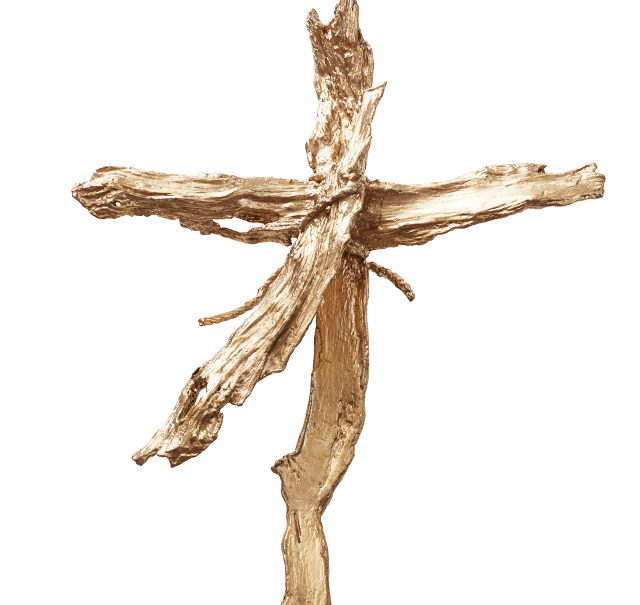
East Window, 2008, by Shirazeh Houshiary and Pip Horne
Etched mouth-blown clear glass and shot peened stainless steel frame the East Window was commissioned as part of the Renewal of St Martin-in-the-Fields, our major £36m building project from 2006-2008. Light was a key theme of the project and the East Window was designed to let in as much light as possible while creating a work of art that is uplifting and inspirational. The artist was given a brief suggesting a minimal, possibly monochromatic design would be appropriate and that a potential starting point or subject was that of ‘Jacob’s Ladder’, a story which has had a continuous thread of resonance for St Martin’s.
Altar, 2011, by Shirazeh Houshiary and Pip Horne
The Altar is designed by Shirazeh Houshiary and Pip Horne, creators of our East Window, and was dedicated at the Patronal Festival in celebration of our patron saint, St Martin of Tours on 13 November 2011.
The Altar is at the symbolic and spiritual heart of our church. it is the place where we gather together in communion with one another and with God, and where broken bread and shared wine become the signs of God’s everlasting love for us. It is a sacred space, the place of transformation, the altar upon which we remember the death of Christ and the suffering of the world, but also the place of resurrection and hope.
Designed to complement the East Window, the Altar is made from a single block of Travertine Stone that appears to float on a plinth of dark stained oak. These materials have been selected to harmonise with the colours used in the interior of the church. It is gently illuminated by LED lights placed within the hollowed out stone.
The Saint John’s Bible, Heritage edition, presented to St Martin-in-the-Fields in 2009
Created by the monks of Saint John’s Abbey and University in Collegeville, Minnesota under the creative direction of Donald Jackson, the Saint John’s Bible is a union of an ancient Benedictine tradition with the technology and vision of today, illuminating the Word of God for a new millennium of multiple cultures and multiple faiths.
St Martin-in-the-Fields was given a Heritage Edition of the Saint John’s Bible by Saint John’s Abbey. The gift was made possible by the generosity of Dan and Katherine Whalen. Created in a series of seven volumes, the bible is used in services in Church. Prints from the Saint John’s Bible are on display in the Gallery and posters are available in the Shop.
The Saint John’s Bible was commissioned in 1998 by the Roman Catholic Benedictine Monks of Saint John’s Abbey and University in Collegeville, Minnesota. It was created by a team of scribes, artists and craftspeople in a scriptorium in Monmouthshire under the artistic direction of Donald Jackson, one of the world’s foremost calligraphers and the scribe to HM Queen Elizabeth ll’s Crown Office and the House of Lords. Measuring more than two feet by three feet, the bible parallels that of its medieval predecessors, written on vellum, using quills, natural handmade inks, hand-ground pigments and gold leaf while incorporating modern themes, images and technology of the 21st century. The creation of the Bible continues the Benedictine tradition of copying and caring for sacred texts. www.saintjohnsbible.org
In the Beginning by Mike Chapman, presented to St Martin-in-the-Fields in 1999
Mike Chapman’s beautiful sculpture In the Beginning was commissioned to mark the new millennium and was part of the 1999 Trafalgar Square Christmas celebrations. Carved in a 4.5 tonne block of Portland Stone, this work is now permanently on display at the entrance to the church.
In The beginning is well-loved by thousands of visitors to St Martin’s every year and as the artist said “It seemed to me that a tiny life-size baby craved from stone in such an enormous environment would be the best way to remind us all of just whose birthday we are celebrating”.
For further information visit www.mikechapmansculptor.com
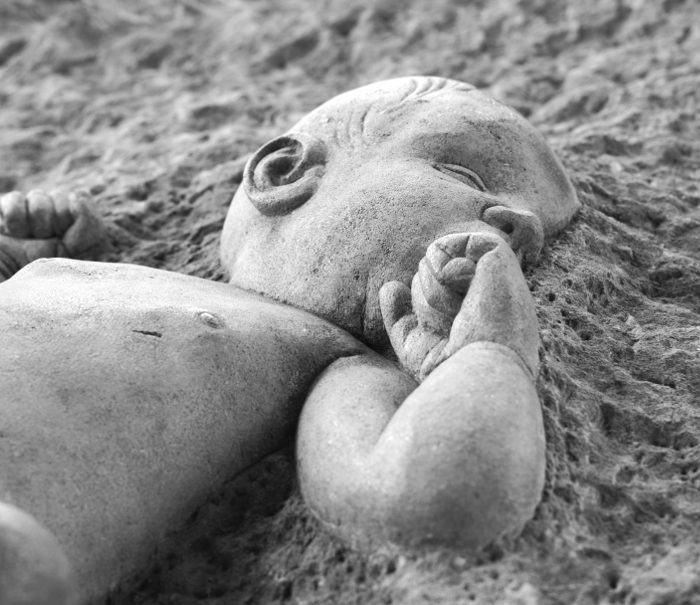
Shadow No 66 (triptych) 1996 by Brad Lochore
This oil on canvas by Brad Lochore explores the fleeting essence of an object using the effects of light mediated via cinema and photography. Lochore’s paintings poetically underline the impermanence and fragility of our lives, and remind us that although we may recognize real things in such artworks, they are after all illusory. Shadow No 66 (triptych) is on permanent display in the Crypt.
“On a metaphorical level shadows are a sign of absence – they indicate the ‘not being there’ of the thing they depict – and that is a very persuasive way to talk about the problem of the picture. For instance, an apple in a painting, no matter how beautifully painted, is not there. It seems to me that a critical part of being a painter is not just to make pretty pictures – it’s to address the problem of pictures. And for me, painting shadows, which is predominantly what I do, is a way I can remorselessly address that dilemma. The dilemma is that the human senses have never been assaulted by so much imagery as now, and I think we forget that. Every minute we encounter a world mediated by pictures, so the ‘real’ is mainly conveyed through images now. And that is not to mourn the passing of a better time, it’s just to recognise how the world is. It seems to me that one of the primary tasks of art is to foreground that problem.” Brad Lochore
Parameter 2012 by Mark Francis
Over the past thirty years, Mark Francis has made paintings of singular optical intensity powerful, apparently abstract combinations of concentrated patterning that explore scientific data and imagery.
Recent paintings use a grid structure as a subtle, compositional device; this may explicitly allude to cartographic formations, sound graphs and astronomical diagrams.
Always acknowledging his interest in physical forces: the natural or man-made trajectories of particles, matter, data orlight, Francis positions himself, and the viewer, amidst myriad ‘mapscapes’ of invisible spaces and networks.
“Parameter is one of a series of paintings created between 2011 and 2014.
The main concern of this series revolves around the use of the grid in relation to different types of networks. Earlier paintings focused on more organic and fluid forms with more chaotic connections. The grid has been an important form throughout my painting practice as it presents a structure within which more ‘random’ incidents can occur. Amongst other influences, the internet, cartography, circuit boards and transport systems provide a stimulus to make the paintings.”
Mark Francis
For further information about the artist visit www.markfrancisstudio.com.
Far East Prisoners of War Memorial
St Martin is the patron saint of pacifists but also of soldiers which makes our church a very appropriate home for the memorial to Far Eastern Prisoners of War. The memorial remembers those who died as prisoners of war or as civilian internees whilst in Japanese hands from 1941-1945 and of those who died subsequently as a result of their suffering during captivity. On display are two blocks of teak, parts of sleepers from the Burma-Siam railway which was built with Prisoner of War labour.
The memorial was viewed by HM Queen Elizabeth when she attended a service at St Martin’s in 2015. The service was the centrepiece of the national commemorations for the 70th anniversary of VJ Day and the end of the Second World War.
The inscription reads – “At the going down of the sun and in the morning – we will remember them”.
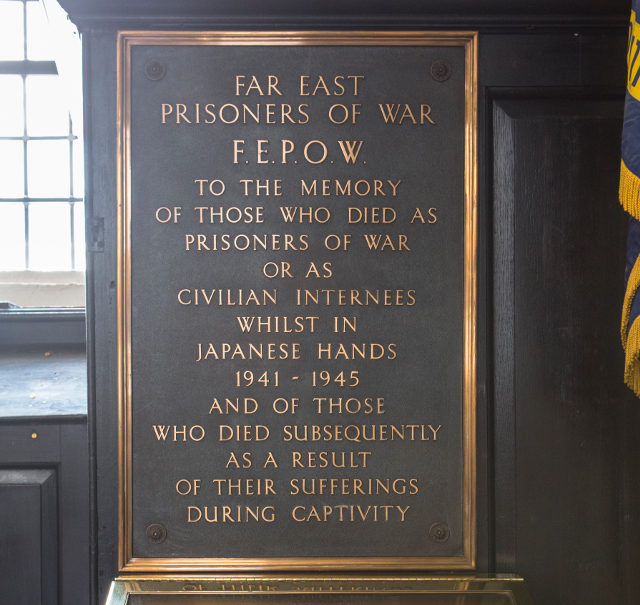
St Martin’s also hosts temporary art exhibitions curated by charitable and cultural organisations. The Foyer, Gallery and Courtyard provide a backdrop for these organisations to share their vision with visitors to St Martin’s – these can be found in the events calendar.
